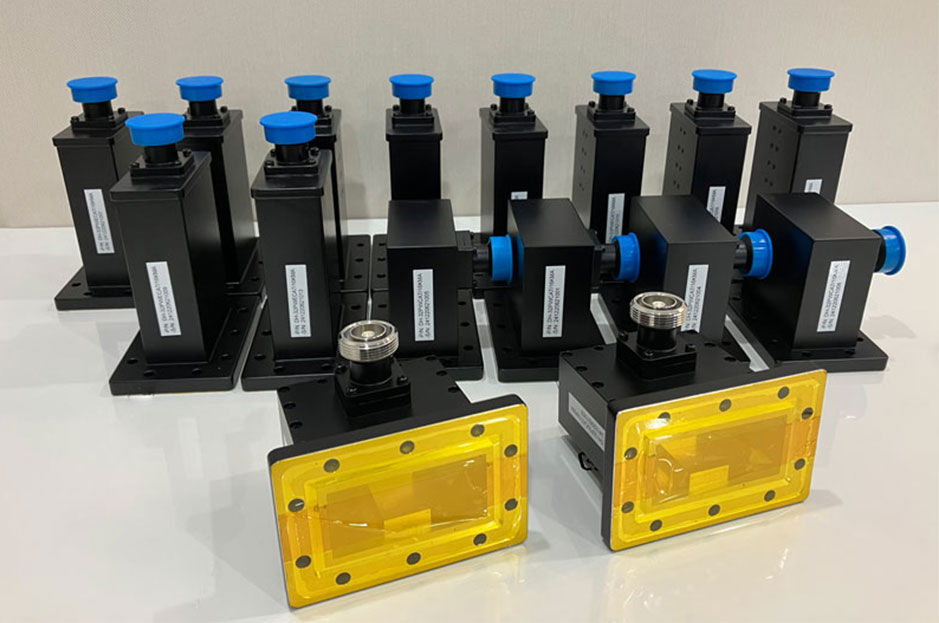Dolph Microwave waveguide components are sorted into many different types, which include waveguide pressure inlet, waveguide attenuator types, waveguide quick disconnect, waveguide adapter, waveguide termination and load, waveguide coupler, waveguide o ring, flexible waveguide, standard gain horn antenna and waveguide band pass filter etc. These components can be used for different system application and usage like mode transfer, connection and so on.
Waveguide components belong to passive components, which are widely used for transmitting, amplifying, controlling, measuring, filtering, coupling, combining, or dividing RF signals. A waveguide is used to transmit electromagnetic signals which are often in the microwave frequency range, which is shaped as a hollow metal tube structure. For example, in radars, a waveguide transfers RF energy to and from the antenna.
Waveguide components can be divided into many types like coaxial adapters, waveguide termination, waveguide pressure inlet, flexible waveguides, waveguide attenuator types, waveguide transitions, bends, circulators, feed horns, filters, switches, etc. These components are used in commercial, military, Telecommunication, space, Lab, test & measurement, radar, defense, industrial microwave, and many other applications.
Dolph Microwave is a leading manufacturer in the industry of microwave components. If you find waveguide components that you're interested in, you can get the datasheets and relevant documents from both our website and product list.
More is shown in products.
Waveguide components generally have more than two parts, and electromagnetic waves are controlled by some kind of inhomogeneity or some kind of coupling mechanism, that is, various transformations of electromagnetic waves are performed.
Flanges are welded to the end face of the waveguide and are used to extend or insert components to connect the waveguide or waveguide components to each other. In this way, a current node can be formed at the mechanical contact. Even if there is a slight gap or mistwist between the end faces of the two waveguides, there will still be a short-circuit reactance between them, so as to achieve microwave coupling to DC open circuit and RF short circuit. Various types of waveguide joints often play a central role. It can connect a plurality of waveguide elements together to form a microwave circuit, so that the power of several wave modes of electromagnetic waves is distributed among various elements in a certain proportional relationship. The microwave circuit formed by the connection of waveguide components depends not only on the components it contains and how they are connected, but also on the geometry of the connector.


Standard waveguide components are covering specific frequency range with specifc flange, which is of high performance and quality.
Frequency range is related to waveguide tube selection and size. Normally, high frequency range is equal to small waveguide tube and size and oppsite is for low frequency.
Material selection includes aluminum, copper and brass for option.